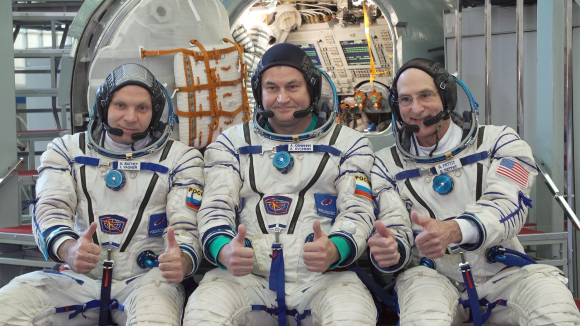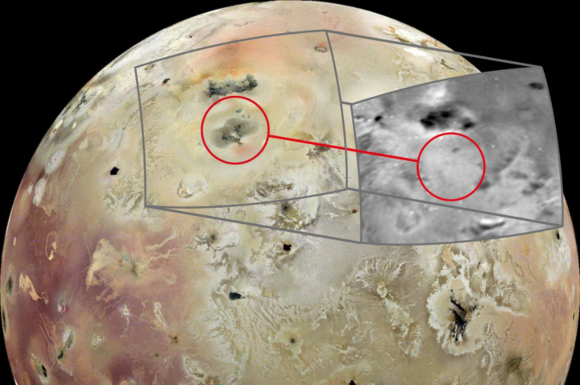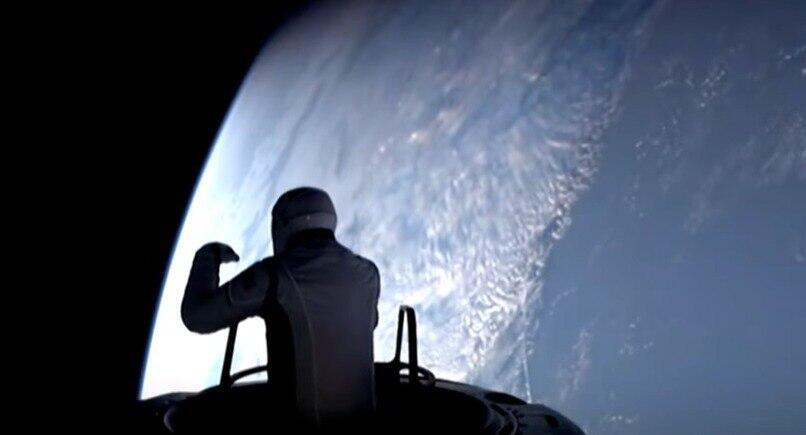Getting your Trinity Audio player ready...
First private spacewalk
The crew of the private space mission Polaris Dawn successfully performed the first spacewalk in history by private astronauts who did not undergo a traditional space agency's training program. This historic feat marked the highlight of the pioneering mission launched on Tuesday.
Jared Isaacman, the mission commander and financier, led the spacewalk. He opened the hatch of SpaceX's Dragon spacecraft and stepped out in a new spacesuit developed by SpaceX, which was undergoing its inaugural test.
Unlike the suits designed for independent spacewalks outside the International Space Station, the SpaceX suit does not allow for independent spacewalking and is reliant on the spacecraft's systems for oxygen supply, power, communication and other infrastructure, via cables and tubes connecting the astronaut to the spacecraft. Isaacman re-entered the spacecraft after a few minutes, followed by fellow crew member Sarah Gillis.
Due to the small size of the spacecraft and the absence of an airlock—a passageway between the internal environment and the vacuum of space—the two remaining crew members, Scott Poteet and Anna Menon, also wore full spacesuits and were exposed to the space environment. This marked the first time in history that four crew members were simultaneously exposed to the space environment, surpassing the Apollo missions where a maximum of three astronauts were exposed.
On the International Space Station, only two astronauts or cosmonauts venture outside at a time. This spacewalk also set a record as the highest ever performed in Earth's orbit, at approximately 730 kilometers—about 150 kilometers higher than the service missions to the Hubble Space Telescope, and second only to the spacewalks during the final Apollo missions on their return journey from the Moon.
In reality, the two astronauts did not completely float free of the spacecraft. They extended most of their bodies out while holding onto a designated railing, conducting tests on the suit and its maneuverability. Each astronaut spent only a few minutes outside; the majority of the officially recorded "spacewalking" time, nearly two hours, was allocated to suit oxygen pressurization, walking to the hatch, and, eventually, closing the hatch and re-pressurizing the spacecraft with air.
(Video: SpaceX)
The spacewalk was the centerpiece of the Polaris Dawn mission. At the beginning of the mission, the spacecraft reached a peak altitude of about 1,400 kilometers, the farthest distance from Earth achieved by humans without traveling to the Moon.
Upon reaching this milestone, the SpaceX control center in Texas congratulated the crew on the achievement, to which Isaacman expressed anticipation for NASA's Artemis manned lunar missions, which aim to take humans to even greater heights.
The altitude achieved is on the edge of the Van Allen Belt, the radiation belt created by Earth's magnetic field, and the crew collected data on radiation levels the astronauts were exposed to as part of preparations for deep space missions.
The mission includes nearly forty experiments, including medical research, to be conducted over its five-day duration. It was set to conclude on Saturday with a sea landing off the coast of Florida.
Polaris Dawn is the first of three planned private missions under the Polaris program, with the third mission already scheduled to take place aboard SpaceX's Starship—the massive spacecraft currently under development by SpaceX for future missions to the Moon, Mars, and other destinations.
Hello, is this space?
AST SpaceMobile, a company planning to establish a satellite network to enable direct cellular communication from space, launched its first batch of communication satellites, BlueBird, on Thursday.
While the company positions itself as a future competitor to SpaceX and its Starlink network, the satellites were launched on a SpaceX Falcon 9 rocket, suggesting that SpaceX does not yet view AST SpaceMobile as a significant threat.
This initial batch includes five satellites, each folded to fit within the rocket and then unfolding in space to cover an area of over 36 square meters. Shortly after the launch, AST SpaceMobile confirmed that all satellites had been successfully placed in orbit, and communication was successfully established.
These satellites are the first in a constellation that is expected to eventually include several dozen satellites. They will later be joined by next-generation BlueBird satellites, which will have three times the surface area.
The satellites are designed to function as cellular antennas in space, enabling direct communication from regular mobile devices, even in remote areas such as the middle of the ocean or on airplanes, or in emergencies when ground-based infrastructure is compromised. However, the first five satellites will provide only very limited coverage initially.
AST SpaceMobile's investors include some of the largest cellular companies in the United States, such as AT&T, Verizon, and Vodafone. Additionally, the company won a communication contract from the U.S. Department of Defense based on the performance of the BlueWalker experimental satellite it launched about two years ago and is currently in discussions with the department for further contracts.
While AST SpaceMobile brands itself as an American company, it also operates a development center in Israel, where its communication modules are developed and manufactured.
Crowded skies: New highs for age and crew in space
American astronaut Don Pettit, 69, has become the oldest person to embark on a long-term mission to the International Space Station (ISS). He arrived this week aboard a Soyuz spacecraft with cosmonauts Alexey Ovchinin and Ivan Vagner.
3 View gallery


Don Pettit (right), with Ivan Vagner (left) and Alexey Ovchinin preparing for launch this week
(Photo: NASA/JSC)
The three join the 72nd crew on the ISS, which also includes veteran astronauts Sunita Williams and Barry Wilmore. Both Williams and Wilmore arrived at the station during Boeing's Starliner test flight but remained on board after NASA raised safety concerns about the spacecraft, deciding to bring it back to Earth unmanned.
They are expected to be joined by American astronaut Nick Hague and Russian cosmonaut Alexander Gorbunov, who will arrive on a SpaceX Dragon spacecraft, with empty seats available to accommodate Williams’ and Wilmore’s return to Earth.
The title of the oldest person to have orbited the Earth is still held by the late American astronaut John Glenn, who was the first American to orbit the planet in 1962 and flew again on the Space Shuttle Discovery in 1998 at age 77.
The oldest person to have been on the ISS is private astronaut Larry Connor, who was 72 when he joined Israeli astronaut Eytan Stibbe on the AX-1 mission. However, Connor's stay lasted about two weeks, whereas Pettit is expected to spend around six months on the station. This marks Pettit’s fourth mission to the ISS, where he already holds an impressive record of about 370 days in space.
The Soyuz launch on Wednesday also set a new record for the number of people simultaneously in orbit around Earth. Alongside the 12 astronauts and cosmonauts currently staffing the ISS during crew rotations, three taikonauts are manning the Chinese space station, Tiangong 3. Along with the four crew members of the Polaris Dawn mission, the total reaches 19, surpassing by two the previous record set last year.
A volcano is born
The most geologically active place in our solar system is Io, one of the largest moons of Jupiter. Slightly larger than Earth's Moon, Io's surface—slightly smaller than the continent of Asia—is dotted with over 400 active volcanoes.
3 View gallery


A new volcano on Io. Image from the Juno spacecraft of the area of the new volcano, compared to an image of the same area from 1997
(Photo: NASA/JPLCaltech/SwRI/MSSS/Europlanet)
The last comprehensive mapping of these volcanoes was conducted in 1997 using images from the Galileo spacecraft, which explored Jupiter and its moons. Now, during a new mapping based on images from the Juno spacecraft, which has been orbiting Jupiter since 2016, researchers discovered a newly formed large volcano. This volcano has ejected material covering an area of about 180 square kilometers, located slightly south of Io’s equator.
"Our recent JunoCam images show many changes on Io, including this large, complicated volcanic feature that appears to have formed from nothing since 1997," said Michael Ravine, a project manager at Malin Space Science Systems, which manufactured the spacecraft's camera and operates it. Ravine led the research and presented the findings at the European Planetary Science Congress.
The new volcano was captured during Juno's close flyby of Io in February this year, from a distance of 2,530 kilometers. This was one of three flybys of the spacecraft near Io in 2023 and 2024, which produced about 20 high-quality color images of the moon's surface, with a resolution of about 1.7 kilometers per pixel.
In addition to the new volcano, with two lava flows extending over 100 kilometers each clearly visible to its west, the researchers identified fresh lava flows and additional deposits of volcanic material at other volcanoes, and observed nine mountains emitting smoke.
The extensive volcanic activity on Io is primarily driven by the gravitational forces exerted on it by Jupiter's strong gravity, and to some extent also by the nearby moon Europa. The friction created within the moon generates heat that melts the rocks, eventually leading to the eruption of magma through its many volcanoes.
Similar forces acting on Jupiter's other large moons — Ganymede, Europa, and Callisto — likely maintain subsurface oceans of liquid water beneath their icy crusts, making these moons intriguing candidates in the search for extraterrestrial life in the solar system.





